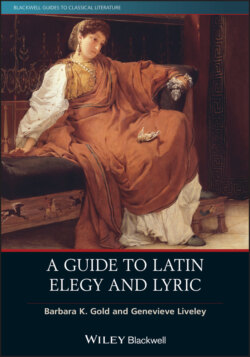Читать книгу A Guide to Latin Elegy and Lyric - Barbara K. Gold - Страница 17
Guide to Further Reading
ОглавлениеThere are several studies that offer good starting points for understanding the social, political, and cultural contexts in which Latin lyric and elegy was originally produced, including: J.P. Sullivan, “The Politics of Elegy.” Arethusa 5:1 (1972): 17–34; Judith Hallett, “Woman as Same and Other in Classical Roman Elite.” Helios 16 (1989): 59–78; Catharine Edwards, The Politics of Immorality in Ancient Rome (1993); Karl Galinsky, Augustan Culture (1996); Thomas Habinek and Alessandro Schiesaro, The Roman Cultural Revolution (1997); Thomas Habinek, The Politics of Latin Literature (1998); Andrew Wallace-Hadrill, Rome’s Cultural Revolution (2008); Efrossini Spentzou, The Roman Poetry of Love: Elegy and Politics in a Time of Revolution (2013); Stephen J. Harrison, “Time, Place and Political Background.” In Thea Thorsen, ed., The Cambridge Companion to Latin Love Elegy (2013), 133–150. Jasper Griffin’s Latin Poets and Roman Life (1985) is a little dated now but is still useful background reading. D. O. Ross on Backgrounds to Augustan Poetry: Gallus, Elegy, and Rome (1975) is also still useful as an introduction to the elegiac genre, as is W. R. Johnson’s The Idea of Lyric (1982) on lyric traditions. Other useful studies of genre and canon and the relationship between Greek and Latin lyric and elegy include George Luck, The Latin Love Elegy (1959); Paul Allen Miller’s Lyric Texts and Lyric Consciousness: The Birth of a Genre from Archaic Greece to Augustan Rome (1994); Roy Gibson’s “Love Elegy.” In S. J. Harrison, ed., A Companion to Latin Literature (2006) and Richard Hunter’s The Shadow of Callimachus: Studies in the Reception of Hellenistic Poetry at Rome (2006).
